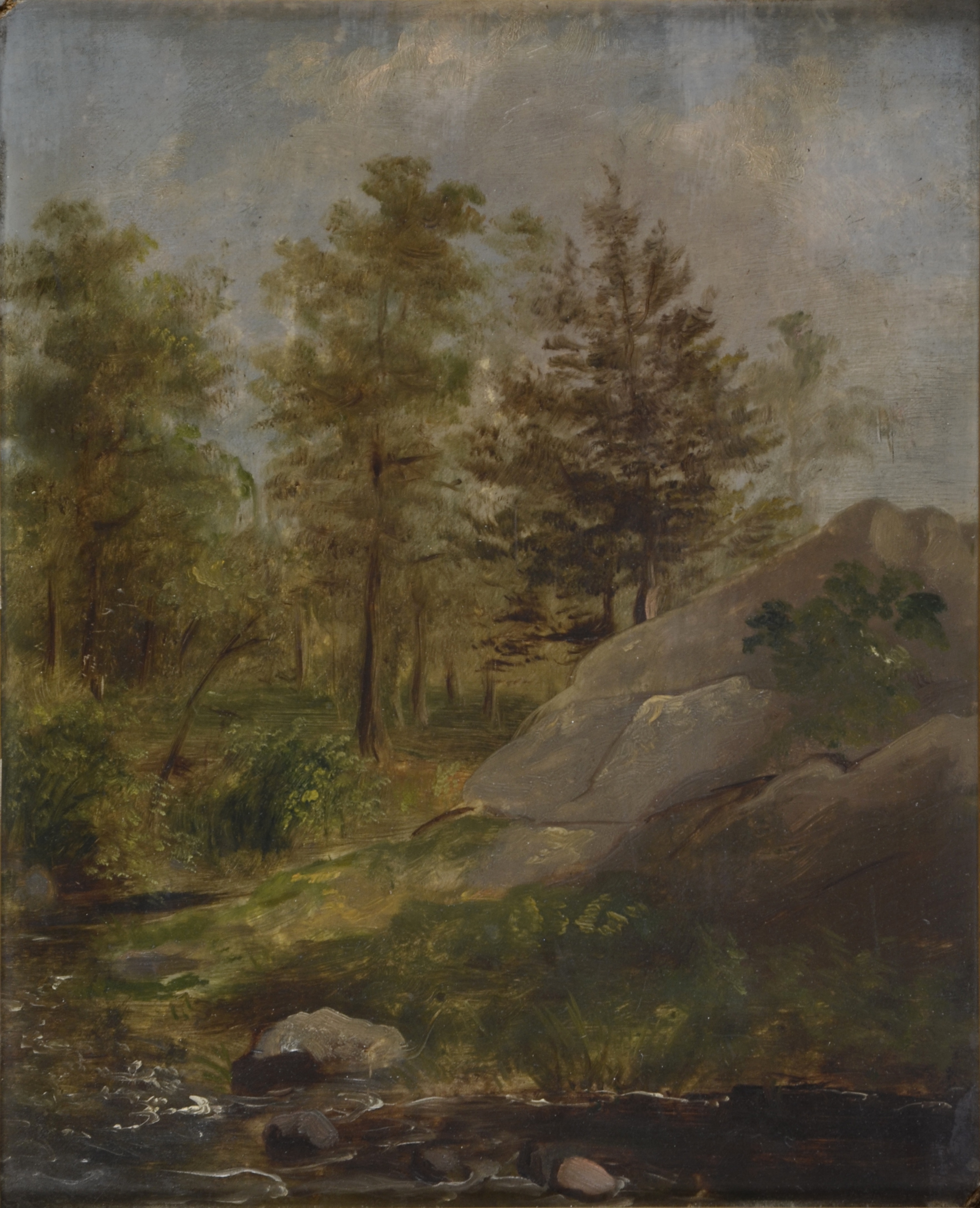
Although it is now largely forgotten, Rhode Islanders of the nineteenth century considered Slate Rock to be one of Providence’s most historically significant landmarks. The boulder was a prominent vantage over the Seekonk River from which, in the spring or early summer of 1636, a group of Narragansetts gave welcome to Roger Williams. Having been exiled from the Massachusetts and Plymouth Colonies, he was paddling southwest from Rumford. Those on Slate Rock generously directed Williams to a suitable settlement site at the fork of the Woonasquatucket and Moshassuck. Subsequently, the Narragansett sachems Canonicus and Miantonomi granted him this area for the founding of Providence.

Slate Rock was accidentally demolished in 1877, when city employees used an excess of dynamite to expose a buried portion of the stone. A monument in Slate Rock Park on Gano Street indicates its former location. Since Roger Williams’ time, land reclamation has separated the spot from the river. Slate Rock represents a moment of fellowship between a English colonist and indigenous peoples, and is a cornerstone of Providence’s persona. The scene is even illustrated on the seal of the city.

The Colony of Rhode Island and the Providence Plantations was the making of a calamity for Rhode Island’s original inhabitants. Despite some resistance, generations of Europeans relocated, enslaved, and occasionally massacred indigenous peoples. According to the census of 1730, less than a century after Williams’ arrival, indigenous peoples constituted only ~5% of the colony’s population. That number was down to 1.1% in the 2019 census. Presently, indigenous peoples are still marginalized and face a disparate level of poverty. This, rather than fellowship, is the truer legacy of Slate Rock.
Sources:
- Bamberg, Cherry Fletcher. “Some R.I. Census Returns.” Rhode Island Genealogical Society (2020).
- Fazio, Marie. “Rhode Island to Remove ‘Plantations’ Reference From Documents.” The New York Times (2020).
- Garrity, Lyn. “John M. Barry on Roger Williams and the Indians.” Smithsonian Magazine (2012).
- Geary, Patrick J. Women at the Beginning: Origin Myths from the Amazons to the Virgin Mary. Princeton University Press (2006).
- “QuickFacts Rhode Island.” United States Census Bureau (2019).
- “Roger Williams: Founding Providence.” National Park Service (2015).
- “Roger Williams’s Landing Place Monument.” Quahog.org (2016).
- Vowell, Sarah. The Wordy Shipmates. Riverhead Books (2009).
- Wayne, G. Millard. “Race In R.I.: The Invisible Natives.” Providence Journal (2015).
